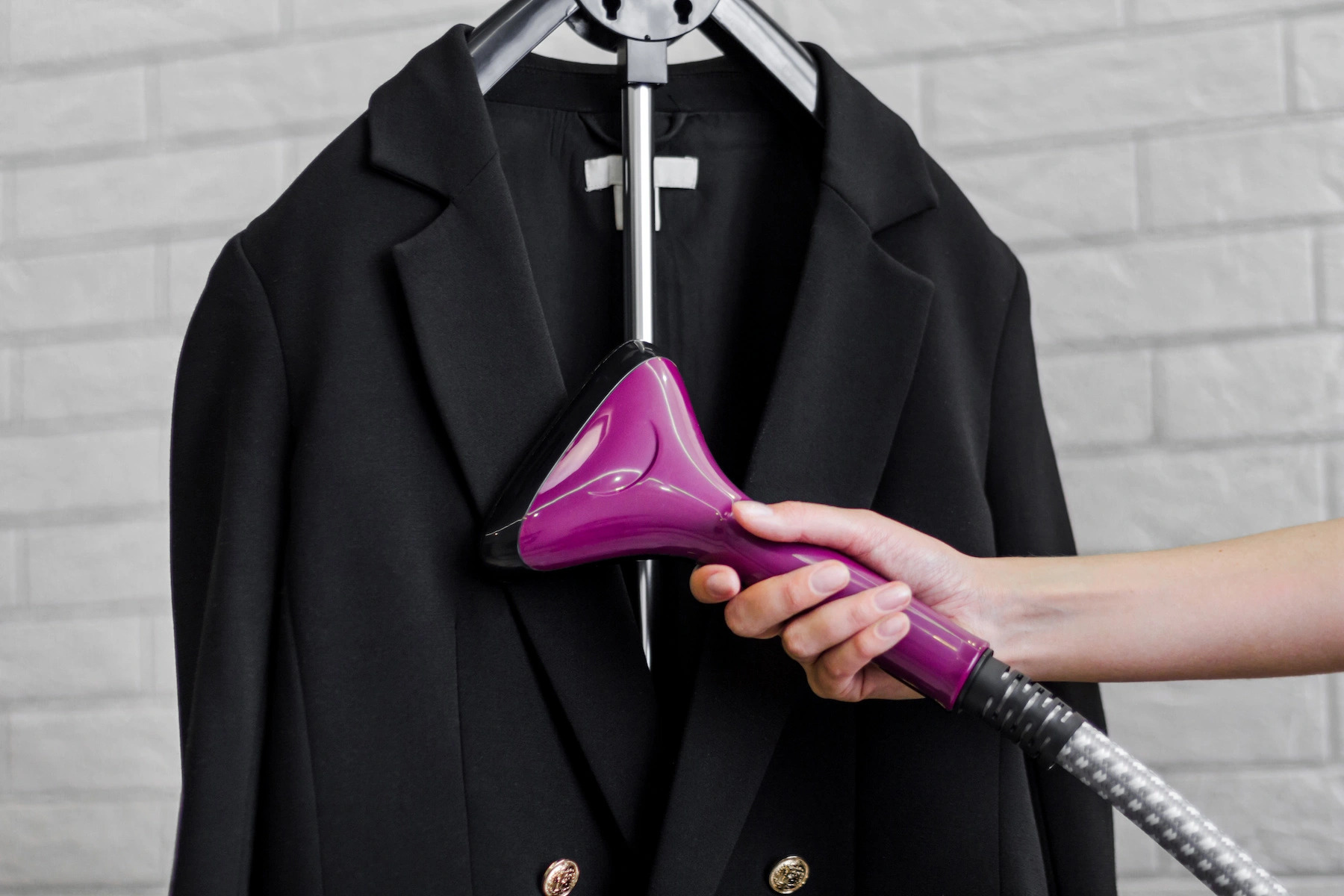

Articles
How To Store A Suit
Modified: August 28, 2024
Learn the proper way to store your suit and keep it in pristine condition. Our articles provide tips and tricks for maintaining your suit's quality.
(Many of the links in this article redirect to a specific reviewed product. Your purchase of these products through affiliate links helps to generate commission for Storables.com, at no extra cost. Learn more)
Introduction
Storing a suit properly is essential for maintaining its pristine condition and ensuring it remains wrinkle-free and ready to wear for any occasion. Whether you’re storing a suit for a short period of time or for an extended duration, following the right steps can make a significant difference in preserving its quality and longevity.
In this article, we will guide you through the process of storing a suit effectively. From cleaning and preparing the suit to choosing the right storage method and location, we’ll cover all the necessary steps to keep your suit in impeccable shape. Additionally, we’ll highlight common storage mistakes to avoid, ensuring that your suit stays in the best possible condition.
By understanding how to properly store your suit, you’ll not only extend its lifespan but also save time and effort in the long run. So, let’s dive into the step-by-step process of storing a suit correctly, ensuring that it is always ready to impress.
Key Takeaways:
- Properly storing your suits involves cleaning, choosing the right storage method, and using protective covers. Avoid common mistakes and regularly maintain your suits to ensure they remain in top condition for any occasion.
- Selecting the ideal storage location away from direct sunlight and maintaining consistent temperature and humidity is crucial for preserving your suits. By following these steps diligently, you can enjoy the longevity of your well-cared-for suits.
Read more: How To Store Suits In Storage
Step 1: Clean and Prep the Suit
Before storing your suit, it’s crucial to have it properly cleaned and prepared. This step is essential to remove any dirt, stains, or odors that could potentially damage the fabric during storage. Follow these guidelines to ensure your suit is in prime condition before storing it:
- Inspect for Stains: Carefully check your suit for any noticeable stains or spills. If you spot any, take immediate action to treat and remove them. Use a mild detergent or stain remover specifically designed for delicate fabrics. Follow the instructions provided by the manufacturer and perform a spot test on an inconspicuous area before treating the stain.
- Dry Clean or Launder: If your suit requires more than spot treatment for stains, consider taking it to a professional dry cleaner. They have the expertise and specialized equipment to clean and handle suits properly. Ensure you communicate any specific concerns or instructions to the cleaners. If your suit is made of machine-washable fabric, you may choose to launder it at home following the care instructions on the label. However, professional cleaning is generally recommended as it ensures a thorough and safe process.
- Press or Steam: Once your suit is clean and dry, either opt to have it professionally pressed or steam it at home. Pressing helps to remove any remaining wrinkles and restores the suit’s crisp look. If you decide to steam it yourself, use a handheld steamer or hang the suit in a well-ventilated room while gently steaming the fabric. Be cautious not to over-steam or expose the suit to excessive moisture.
- Remove Accessories: Before storing the suit, remember to remove any accessories such as ties, pocket squares, or belts. These items should be stored separately to prevent any potential damage or wrinkling.
Taking the time to properly clean and prepare your suit before storing it ensures that you are starting with a fresh and well-maintained garment. This step sets the foundation for the other storage practices that will help preserve your suit’s condition.
Step 2: Choose the Right Storage Method
Selecting the appropriate storage method is crucial for maintaining the shape and condition of your suit. Here are some options to consider:
- Hanging: Hanging your suit is the preferred method as it helps to preserve the shape of the jacket and trousers. Invest in high-quality wooden or padded hangers to provide adequate support for your suit. Make sure the hanger is wide enough so that the shoulders of the jacket maintain their shape. Avoid wire hangers as they can cause indentations and misshapen shoulders.
- Folding: If hanging is not feasible due to space limitations, you can fold your suit carefully. This method is best suited for travel or short-term storage. To fold, lay the suit flat and fold the jacket in half vertically. Then, fold the trousers in half lengthwise and place them on top of the folded jacket. Make sure to insert acid-free tissue paper or a clean cotton cloth between the folds to prevent creases.
- Suit Bags or Garment Covers: Whether you choose to hang or fold your suit, it’s essential to use suit bags or garment covers as an extra layer of protection. These covers help shield your suit from dust, moisture, and potential damage. Opt for breathable covers made of natural fabrics like cotton or linen, as they allow airflow and prevent the build-up of moisture.
Consider your specific needs and available space when deciding on the storage method. Hanging is the preferred option for long-term storage, ensuring minimal creasing and maintaining the suit’s shape. However, if hanging is not possible, folding with the use of suit bags or garment covers can be a viable alternative.
Remember to avoid overcrowding your storage space, as tightly packed suits can become wrinkled and lose their shape. Allow enough room for each suit to breathe and prevent any unnecessary pressure on the fabric. With the right storage method, you can prolong the life and appearance of your suit, ready for whenever the occasion calls.
Step 3: Fold the Suit Properly
If you choose to fold your suit for storage, it’s important to do so correctly to minimize wrinkling and creasing. Follow these steps to fold your suit properly:
- Start with a clean, flat surface: Find a clean and smooth surface to work on, such as a table or bed. Ensure there are no sharp objects or rough surfaces that could damage the fabric.
- Lay the jacket flat: Place the jacket face down on the surface, with the back of the jacket facing up.
- Fold the jacket in half vertically: Take the right shoulder of the jacket and fold it across to meet the left shoulder. Ensure that the collar is neatly folded and aligned.
- Fold the trousers: Lay the trousers flat, with the legs extended. Fold the trousers in half lengthwise, bringing the right leg over the left leg.
- Place the trousers on top of the jacket: Position the folded trousers on top of the folded jacket. Align the waistband of the trousers with the collar of the jacket to create a neat and compact fold.
- Insert tissue paper or a clean cloth: Insert acid-free tissue paper or a clean cloth between the folds of the jacket and trousers to prevent creases and help maintain the shape of the suit.
When folding your suit, it’s important to create clean and even folds to minimize the risk of deep creases. Remember to handle the fabric gently and avoid excessive pressure while folding. The use of tissue paper or a cloth helps to provide a protective barrier and maintain the suit’s shape during storage.
If possible, store folded suits in a climate-controlled environment to prevent damage from moisture, extreme temperatures, or pests. Avoid storing the suits in plastic bags or containers, as they can trap moisture and lead to mildew or musty odors. Instead, choose breathable garment covers made of natural fibers to allow proper airflow.
By following these folding guidelines and storing your suit in a suitable environment, you can ensure that it remains wrinkle-free and in excellent condition until you’re ready to wear it again.
Step 4: Use Protective Covers or Garment Bags
Using protective covers or garment bags is an essential step in storing your suit to prevent dust, dirt, and potential damage. Here’s how to effectively use these covers to safeguard your suit:
- Select breathable covers: Choose garment bags or covers made of breathable materials like cotton, linen, or nylon. Breathable covers help to maintain airflow and prevent the build-up of moisture, which can lead to mildew or musty odors.
- Ensure the covers are the right size: Make sure the garment bags or covers you choose are the appropriate size for your suit. They should provide enough space for the suit to hang or lie flat without being cramped or excessively stretched.
- Hang suits in garment bags: If you decide to hang your suits, place them on properly shaped hangers and slide them into garment bags. This extra layer of protection shields your suit from dust, insects, and potential snagging.
- Use covers for folded suits: If you’re folding your suits, place them inside garment bags individually. Folded suits can be stored on shelves or in storage boxes with breathable covers.
- Avoid plastic covers or bags: While it may be tempting to use plastic covers or bags, they should be avoided as they can trap moisture and lead to mildew or mustiness. Plastic can also cause the fabric to deteriorate over time.
Properly using protective covers or garment bags ensures that your suit remains in optimal condition during storage. These covers shield your suit from external elements and help to maintain its freshness and cleanliness. Remember to periodically check the condition of the covers and replace them if they show signs of wear or damage.
Storing your suit in the right covers also makes it easier to locate and access when you need it. By investing a little extra effort in protecting your suit, you can greatly extend its lifespan and preserve its appearance for years to come.
To store a suit, use a breathable garment bag to protect it from dust and moths. Hang it on a sturdy, wide-shouldered hanger to maintain its shape. Avoid plastic bags or crowded closets to prevent wrinkles.
Read more: How To Use A Steamer On A Suit
Step 5: Select the Ideal Storage Location
Choosing the right storage location for your suits is crucial for maintaining their quality and condition. Here are some factors to consider when selecting an ideal storage spot:
- Avoid direct sunlight: Sunlight can cause fading and discoloration of your suit’s fabric over time. Choose a storage location away from windows or direct sunlight exposure to prevent any damage.
- Maintain consistent temperature and humidity: Fluctuations in temperature and humidity can negatively impact your suit’s fabric. Opt for a storage area with stable and moderate conditions to prevent excessive moisture or dryness.
- Avoid areas prone to moisture or pests: Moisture can lead to mold or mildew growth, while pests like moths can cause damage to your suits. Be cautious of basements, attics, or areas with high humidity. Consider using moisture absorbers or cedar blocks to mitigate these risks.
- Choose a clean and dust-free space: Dust can settle on your suits and make them look dull or dirty. Select a storage area that is clean, free from excessive dust, and provides protection from any potential debris or pollutants.
- Allow for proper air circulation: Adequate ventilation is crucial to prevent musty odors or moisture accumulation. Avoid storing your suits in airtight or cramped spaces to ensure proper air circulation.
Consider these factors when determining the best storage location for your suits. An ideal spot would be a separate closet or wardrobe, but if space is limited, you can utilize a spare room or under-bed storage solutions. Just ensure that the chosen area meets the aforementioned criteria for temperature, humidity, cleanliness, and protection from sunlight and pests.
Additionally, it’s essential to periodically check the storage area for any signs of mold, pests, or moisture. Regular inspections will allow you to take prompt action if any issues arise and prevent potential damage to your suits.
By carefully selecting the ideal storage location, you can ensure that your suits remain in optimal condition, ready to be worn whenever the need arises.
Step 6: Avoid Common Storage Mistakes
To keep your suits in the best possible condition, it’s important to avoid common storage mistakes. Here are some key pitfalls to steer clear of:
- Using wire hangers: Wire hangers can cause indentations and misshapen shoulders on your suit. Opt for high-quality wooden or padded hangers that provide proper support and maintain the suit’s shape.
- Overcrowding: Avoid cramming your suits together in a tight space. Overcrowding can lead to wrinkles, creases, and even fabric damage. Give each suit enough room to breathe and maintain its shape.
- Storing dirty suits: Never store dirty suits. Stains and dirt can set in over time and become challenging to remove. Ensure your suits are clean and properly treated before storing them.
- Using plastic covers or bags: Plastic covers or bags can trap moisture, leading to mold, mildew, and musty odors. Opt for breathable covers made of natural fabrics like cotton or linen.
- Ignoring regular maintenance: It’s important to periodically check and maintain your stored suits. Inspect for any signs of mold, pests, or fabric damage. Take steps to address any issues promptly to prevent further deterioration.
By avoiding these common storage mistakes, you can significantly prolong the life and quality of your suits. Taking the necessary precautions and implementing proper storage practices will ensure that your suits remain in excellent condition, ready for any occasion.
Step 7: Regularly Check and Maintain the Suit
Regularly checking and maintaining your stored suits is essential for their long-term preservation. Here’s how you can keep them in optimal condition:
- Inspect for damage: Periodically examine your stored suits for any signs of damage, such as moth holes, loose threads, or discoloration. If you notice any issues, it’s important to address them promptly to prevent further deterioration.
- Air them out: Take your stored suits out of their covers or garment bags occasionally to allow them to breathe. Hang them in a well-ventilated area for a few hours to freshen up the fabric and discourage odors.
- Brush or gently vacuum: Use a clothing brush or a gentle vacuum attachment to remove any dust or debris that may have settled on your suits. Be careful when using a vacuum and choose the lowest setting to avoid damaging the fabric.
- Rotate your suits: Avoid constant pressure on specific suits by rotating them regularly. This helps prevent excessive creasing and allows each suit to rest and maintain its shape over time.
- Consider professional cleaning: Every once in a while, consider taking your suits to a professional dry cleaner for thorough cleaning and maintenance. They have the expertise and equipment to handle delicate fabrics and restore your suits to their original condition.
- Re-treat stains promptly: If you notice any new stains on your suits during inspection, treat them immediately. The longer a stain sets, the more difficult it becomes to remove. Follow the manufacturer’s instructions or consult a professional for the best stain removal techniques.
By regularly checking and maintaining your stored suits, you can ensure that they are always in excellent condition and ready to wear at a moment’s notice. Taking proactive measures to address any issues and implementing a consistent maintenance routine are key to preserving the quality and appearance of your suits for years to come.
Conclusion
Properly storing your suits is essential for maintaining their quality, appearance, and longevity. By following the steps outlined in this article, you can ensure that your suits remain in pristine condition, ready to make a stylish statement whenever you wear them.
Remember, the process begins with cleaning and prepping your suit, ensuring that it is free from stains and odors. Choosing the right storage method, whether it be hanging or folding, is crucial for preserving the shape and structure of your suit. Using protective covers or garment bags adds an extra layer of protection against dust, dirt, and potential damage. Selecting the ideal storage location, away from direct sunlight, with consistent temperature and humidity, will further safeguard your suits.
Avoiding common storage mistakes, such as using wire hangers, overcrowding, and storing dirty suits, is essential. Regularly checking and maintaining your suits, including inspecting for damage, airing them out, and rotating them, will ensure they remain in top condition. Consider professional cleaning for a deeper clean and addressing any persistent stains.
Taking the time and effort to store your suits properly pays off in the long run. Your suits will maintain their crisp appearance, fit, and overall quality over time, allowing you to confidently wear them for various occasions. So, follow these steps diligently and enjoy the longevity of your well-cared-for suits.
Frequently Asked Questions about How To Store A Suit
Was this page helpful?
At Storables.com, we guarantee accurate and reliable information. Our content, validated by Expert Board Contributors, is crafted following stringent Editorial Policies. We're committed to providing you with well-researched, expert-backed insights for all your informational needs.















0 thoughts on “How To Store A Suit”